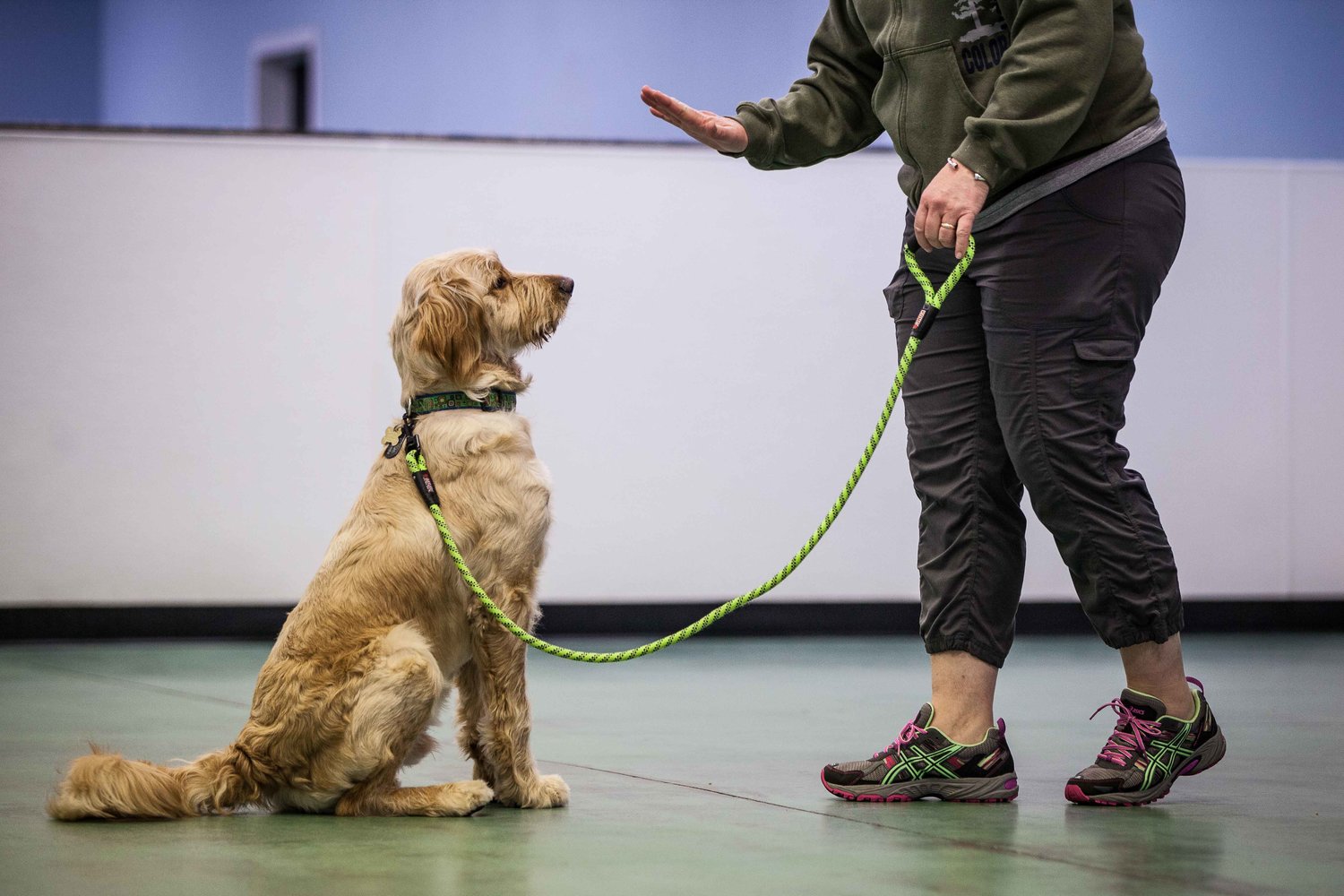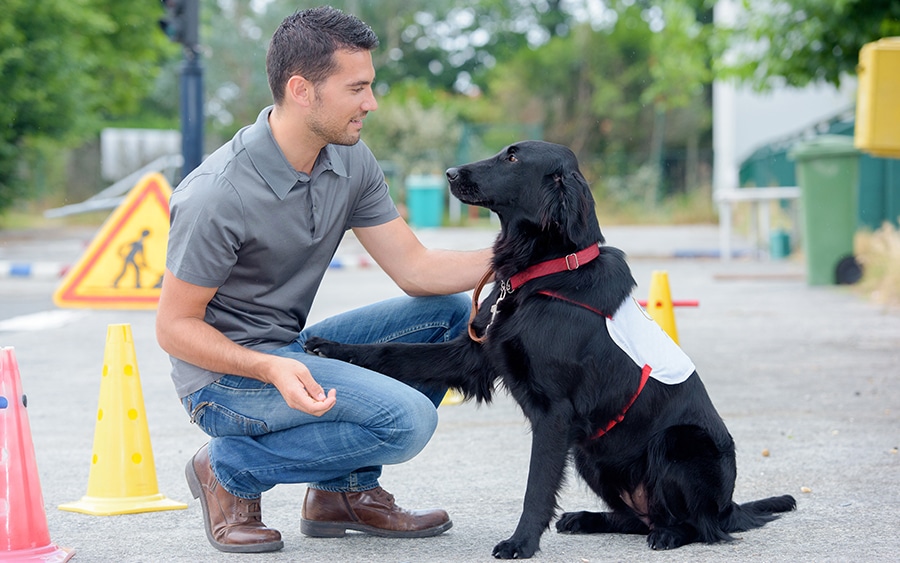Transform Your Pet's Actions With Proven Training Approaches
Transforming your dog's behavior needs a nuanced understanding of their individual qualities and demands, along with the application of tried and tested training approaches. By employing positive support and identifying important hints in their body movement, you can successfully attend to typical behavior concerns such as too much barking or leaping. Uniformity in your training technique not just improves obedience but likewise cultivates a deeper bond of trust fund and regard in between you and your family pet. Nevertheless, the course to successful change may present unforeseen obstacles that warrant more expedition.
Comprehending Dog Actions
Recognizing pet dog behavior is important for reliable training and communication in between people and their canine companions. Pets, as social animals, show a variety of behaviors influenced by genetics, environment, and experiences - Dog training. Identifying these habits aids owners customize their training approaches to meet the certain needs of their pets
Secret facets of dog habits consist of body language, articulations, and social interactions. For example, a wagging tail typically shows enjoyment, while a decreased head may signal submission or fear. Comprehending these signals can aid owners analyze their dog's emotional state and react appropriately. Furthermore, socializing plays a vital role fit habits; pets that interact positively with other animals and different individuals are usually much more versatile and well-adjusted.
In addition, recognizing stress signals-- such as panting, pacing, or avoidance habits-- can avoid acceleration into much more major problems. Owners who are in harmony with their pet's actions can produce a nurturing and safe environment, cultivating trust fund and boosting the training process. Inevitably, a deep understanding of canine behavior lays the foundation for a harmonious connection and efficient training outcomes, guaranteeing both canines and their proprietors grow together.
Positive Support Methods
Favorable reinforcement techniques are extensively acknowledged as one of the most reliable techniques for training canines, promoting a favorable discovering environment. This strategy includes rewarding wanted actions with treats, appreciation, or play, thus urging the pet dog to duplicate those habits. Unlike corrective techniques, favorable reinforcement constructs count on and reinforces the bond between the dog and the fitness instructor.
To implement favorable reinforcement effectively, timing is vital. Incentives must be given promptly following the preferred actions to help the pet dog make the link. Consistency is likewise crucial; utilizing the very same commands and rewards assists the pet understand what is expected. In addition, differing the incentives can maintain the canine engaged - Dog training. For instance, rotating between treats, playthings, and verbal praise can preserve passion and inspiration.
It is essential to note that positive reinforcement is not about bribery; rather, it has to do with strengthening etiquette. Gradually, as the pet dog learns to connect particular actions with positive outcomes, the regularity of incentives can be progressively minimized, transitioning to spoken appreciation or periodic rewards. This method not just urges obedience but additionally promotes a happy and certain pet dog, making training a more satisfying experience for both celebrations involved.
Dealing With Common Issues
Resolving typical problems throughout dog training is vital for guaranteeing a successful and harmonious relationship between the pet and its owner. Many pet dog proprietors run into behavioral challenges, such as too much barking, jumping, and chain drawing. Comprehending the origin of these habits is essential for reliable training.
To minimize this, offer adequate physical exercise, psychological excitement, and opportunities for social communication with both humans and other pets. Training the pet to sit upon greeting can reroute this behavior positively.
Chain drawing is one more widespread issue, often arising from a dog's eagerness to check out. Making use of appropriate chain taking care of techniques, integrated with training methods that urge loose-leash walking, can considerably enhance this actions.
Additionally, issues like resource safeguarding or splitting up stress and anxiety call for customized approaches. Gradual desensitization and counter-conditioning can be effective in attending to these obstacles. By identifying and proactively taking care of these typical concerns, pet dog proprietors can cultivate an extra pleasurable training experience and enhance the bond with their canine buddies.
Consistency in Training

To Get More Information achieve uniformity, it is essential that all members of the household follow the same training approaches. Using the very same spoken cues and hand signals makes certain that the canine obtains uniform messages. In addition, the timing of modifications and benefits must correspond; prompt reinforcement boosts the chance that the canine will certainly associate the habits with the end result.
Regular practice sessions, combined with organized timetables for feeding, strolling, and play, help canines expect and recognize their setting, making them more receptive to training. Eventually, consistency cultivates a sense of protection and count on, equipping pets to find out more efficiently.
Building a Strong Bond
How can promoting a strong bond between a dog and its proprietor boost the training experience? A strong partnership developed on trust fund and regard offers as the structure for efficient training. When a canine feels secure in its connection with its proprietor, it is more likely to show favorable habits and be receptive to finding out. This bond urges the pet dog to engage fully in training sessions, as it watches the proprietor as a source of guidance and assistance.
Furthermore, a solid bond assists in much better communication. Dogs are experienced at checking out human signs, and a trusting relationship enables for clearer signals during training. Proprietors who spend time in building this bond via play, socialization, and favorable reinforcement produce a setting where dogs feel determined and eager to find out.
Additionally, a well-established link can decrease anxiousness and behavioral concerns, as dogs are much less most likely to act out when they feel recognized and cared for. Consequently, prioritizing the advancement of a solid bond not only improves the training experience yet additionally adds to a better and more well-adjusted pet dog. Inevitably, the journey of training transforms into a collective collaboration, leading to lasting behavioral enhancements.
Verdict

Proprietors who are attuned to their find this dog's actions can produce a safe and caring atmosphere, promoting depend on and enhancing the training procedure. Eventually, a deep understanding of canine behavior lays the structure for an unified connection and effective training end results, making certain both pet dogs and their owners flourish together.
Resolving typical issues throughout these details pet dog training is necessary for making sure a successful and unified connection between the pet dog and its owner.Uniformity is a foundation of reliable dog training, as it establishes a clear structure for the canine to recognize habits and assumptions.In final thought, changing a dog's habits via shown training methods needs an understanding of canine behavior, the application of positive support techniques, and an emphasis on uniformity.
Comments on “The Ultimate Guide to Dog Training: Tips for Every Stage of Your Dog’s Life”